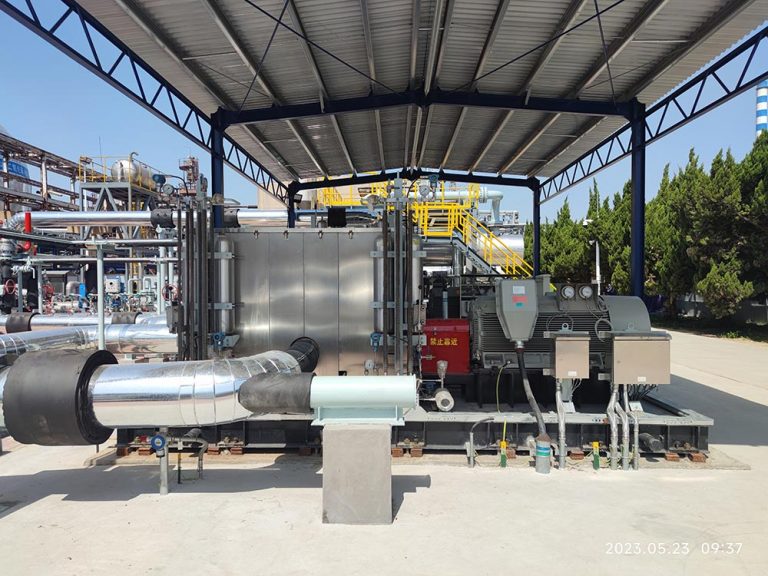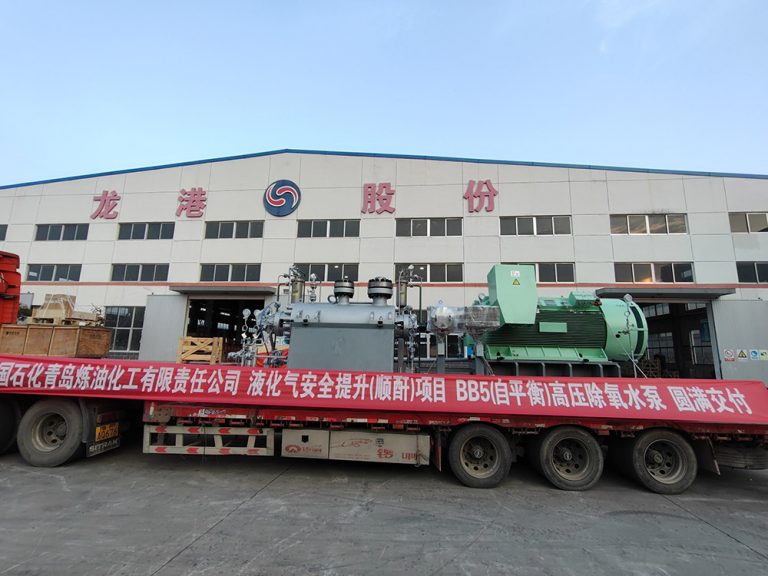Pumps with one redundant impeller in line to produce high-pressure output are called multistage pumps. The configuration is such that these pumps, with multiple impellers, can move the fluids from one point to another over larger distances and at higher pressures. These pumps are widely used for industrial purposes, which necessitate the transfer of fluids at predetermined pressures and flow rates. The design can either be vertical or horizontal as per the application needs on how it should be operated.

Importance in Industrial Applications
In industrial settings, the ability to maintain consistent pressure and flow is crucial for operational efficiency. Multistage pumps are primarily utilized for processes like water supply, irrigation, chemical processing, and boiler feed applications. Their versatility and efficiency make them indispensable tools in industries ranging from petrochemicals to hydropower generation. Customizing these pumps to specific applications increases their effectiveness, ensuring optimal performance without compromising the integrity of the fluids being moved.
Key Differences Between Vertical and Horizontal Multistage Pumps
Structural Differences
The structural design differentiates vertical multistage pumps from horizontal ones significantly. Vertical pumps are designed with a vertical orientation where the motor is mounted above the pump, minimizing the floor space required. On the other hand, horizontal pumps require a larger footprint, as the impellers and motor are arranged along a horizontal plane. This design distinction can directly influence the choice of pump based on available space and installation requirements.
Operational Efficiency Variations
Operationally, vertical multistage pumps tend to demonstrate higher efficiency levels than their horizontal counterparts. The vertical arrangement often results in less inertia, providing faster response times to changes in fluid demand. Additionally, vertical pumps can handle larger specific gravity fluids more effectively due to their configuration, boosting overall performance in various applications. Consequently, the decision to select a vertical or horizontal pump should be anchored in performance evaluations relative to specific operational contexts.
Installation Space Requirements
When it comes to installation, vertical multistage pumps inherently require less physical space compared to horizontal pumps. Their compact design is ideal for situations where space is limited, as they can be installed in smaller utilities, storage rooms, or auxiliary areas without compromising functionality. Conversely, horizontal pumps, while powerful, necessitate more extensive areas for installation, choosing between the two critical depending on the layout of industrial facilities.
Advantages of Vertical Multistage Pumps
Enhanced Space-Saving Design
The vertical multistage pump’s design not only conserves floor space but also allows for more effective use of vertical height. These pumps can be installed in urban settings or buildings with height restrictions without encroaching onto valuable horizontal space. Facilities often benefit from the vertical utilization of equipment, allowing for streamlined design and maximizing operational efficiency while utilizing the available real estate effectively.
Superior Energy Efficiency
Power Consumption and Cost Savings
Energy efficiency is a significant factor in selecting pumping systems, and vertical multistage pumps deliver excellent energy-saving capabilities. Due to their unique construction, they often consume less power than horizontal designs for comparable tasks, resulting in reduced operational costs. Lower energy usage not only benefits financial resources but also contributes to minimizing the carbon footprint of an organization, supporting sustainable practices—an increasingly important consideration in today’s industrial landscape.
Ease of Maintenance and Durability
Long-term Reliability and Reduced Downtime
Vertical multistage pumps boast designs that facilitate easier maintenance and repairs, minimizing downtime in critical operational environments. The vertical arrangement often allows for quicker access to components, which aids in servicing without disrupting other operational activities. Consistent maintenance of these pumps enhances their durability, as they are designed to withstand strenuous operational conditions, which leads to improved longevity and reliability in service.
Integrating Longgang products within this context provides a wealth of advantages. Longgang’s vertical multistage pumps are tailored to accommodate various applications across industrial settings. Known for their compact design, efficient energy use, and reliable long-term performance, Longgang pumps stand out significantly. They are specifically designed to transport clean or slightly corrosive liquids, demonstrating versatility in petrochemical, power, and water processing industries.
The versatility of Longgang products extends to multiple specifications, catering to unique operational demands while ensuring safe and efficient fluid handling. With a design philosophy centered around enhancing service life and maintaining efficiency, their offerings are embedded with advanced features. Longgang pumps are engineered with high-quality materials, and several auxiliary systems that improve operational security and facilitate effective functionality, making them indispensable in the assembly lines of modern industries.
In conclusion, the choice between vertical and horizontal multistage pumps is driven by specific application requirements, available installation space, and operational efficiency needs. Selecting vertical multistage pumps offers compelling advantages like reduced space usage, enhanced energy efficiency, and simplified maintenance procedures. Ultimately, organizations seeking reliable and efficient pumping solutions will find that vertical multistage pumps align well with modern industry needs, providing an optimal balance between performance, sustainability, and cost-effectiveness.

Applications Specific to Vertical Multistage Pumps
Common Industries Utilizing Vertical Pumps
Vertical multistage pumps find extensive applications across a wide range of industries due to their versatile designs and efficient performance. Industries such as petrochemicals leverage these pumps for transporting clean or slightly corrosive liquids, which often require reliable pressure maintenance over significant distances. Power generation facilities utilize vertical pumps in boiler feed and condensate handling systems, ensuring efficient management of water supply and treatment processes. Additionally, vertical multistage pumps are essential in municipal water supply systems, providing consistent flow rates and pressures required for distribution networks, particularly in urban environments where space is a constraint.
Examples from Manufacturing to Municipal Services
Within the manufacturing sector, vertical multistage pumps are integral to chemical processing plants, where precise fluid management is essential for operational accuracy. Their compact design suits confined spaces often found in these facilities, while their durability ensures high-performance levels even under demanding conditions. Furthermore, in municipal services, these pumps play a crucial role in water treatment plants, helping to maintain optimal pressure levels throughout the purification process. By providing reliable service in diverse applications, vertical multistage pumps contribute significantly to improving operational efficiency and reducing downtime across various sectors.
Why Longgang’s Vertical Multistage Pump Stands Out
Unique Product Features of Longgang’s Vertical Multistage Pump
Longgang’s vertical multistage pumps are engineered with cutting-edge technology tailored to meet the diverse needs of industrial applications. They are built from high-quality materials that enhance their durability and longevity, ensuring consistent performance throughout their operational lifespan. Advanced designs reduce maintenance time and operational costs, allowing businesses to maximize downtime and enhance productivity. The configuration allows for optimal hydraulic performance, ensuring that these pumps efficiently manage the movement of fluids while minimizing energy costs.
Materials and Build Quality
Longgang places a strong emphasis on materials and build quality in the manufacture of their vertical multistage pumps. Utilizing corrosion-resistant materials prolongs the service life of the pumps, minimizing wear and tear from actively transporting various fluids. The pumps feature robust construction, designed to withstand the inherent pressures and operational challenges faced in demanding environments. This attention to material quality translates to increased reliability, ensuring that the pump can perform effectively across a myriad of applications without frequent repairs or replacements.
Customization Options Available
Understanding that every application has unique requirements, Longgang provides extensive customization options for its vertical multistage pumps. Users can select different configurations based on operational needs, including variations in pump sizes, specifications, and auxiliary features. This flexibility enables users to adapt the pumps to the specific demands of their industrial environments, enhancing overall operational efficiency. Moreover, custom options allow for improvements in fluid handling processes, ensuring that the pumps meet particular performance criteria without compromising reliability or efficiency.
In summary, the choice of vertical multistage pumps, particularly those from Longgang, poses notable advantages in various industrial applications. Their capability for efficient fluid transfer, compact design, and exceptional reliability all contribute to superior operational effectiveness. By considering Longgang’s vertical multistage pumps, industries can capitalize on these benefits, ensuring they meet operational demands while maintaining cost-effectiveness in their fluid management systems.








